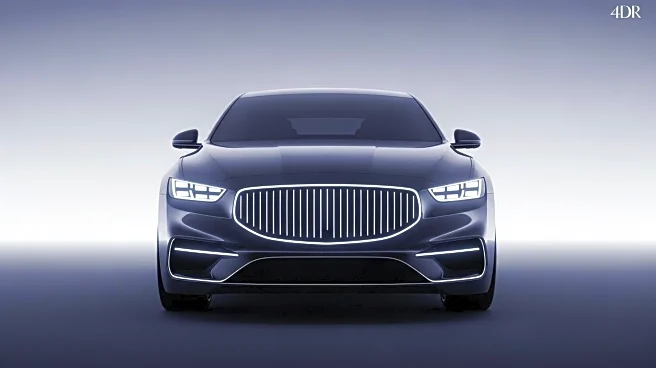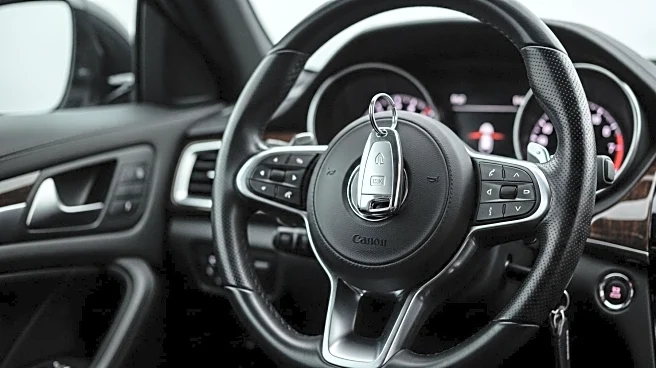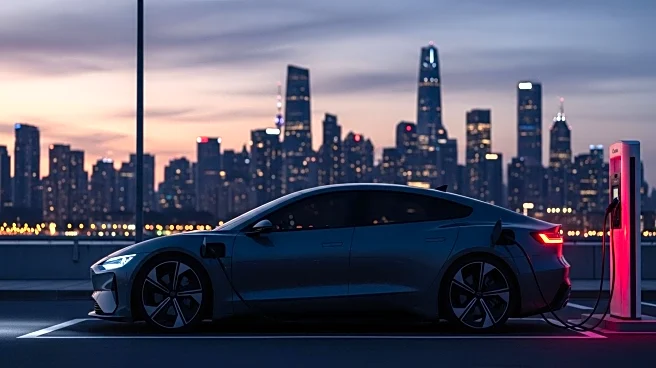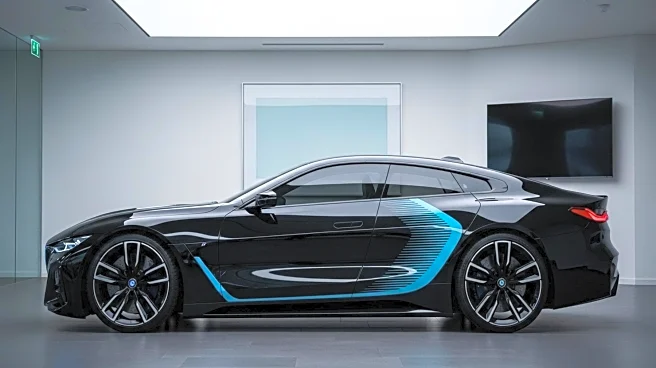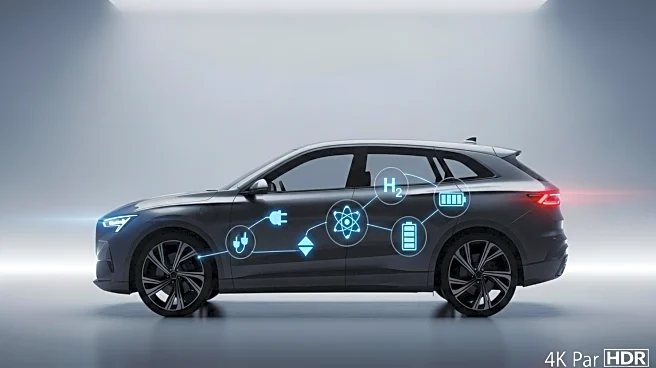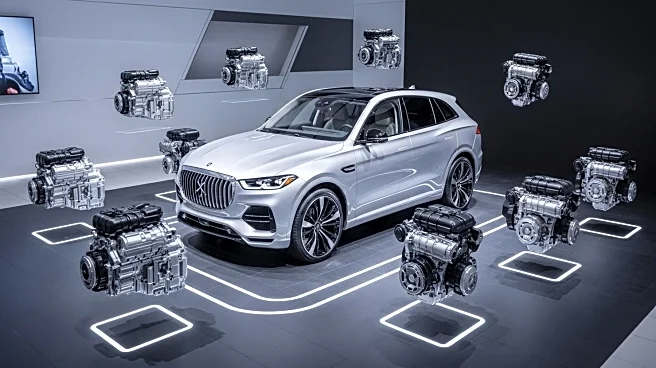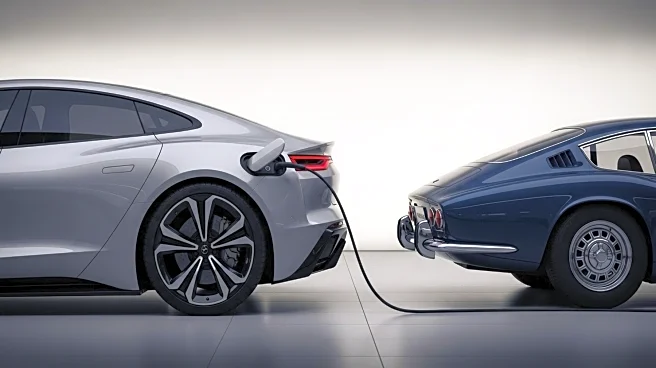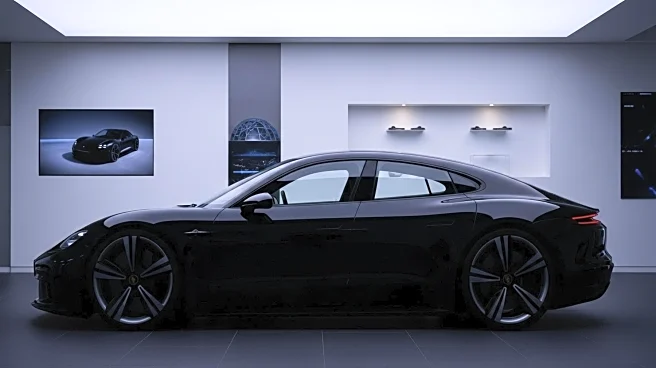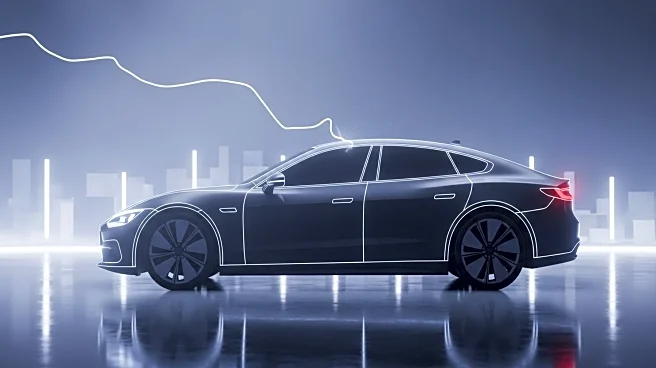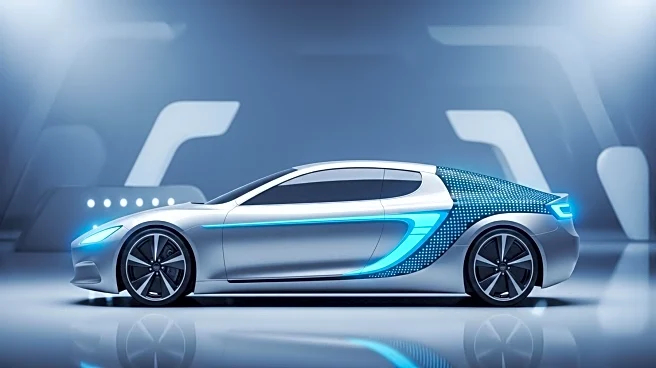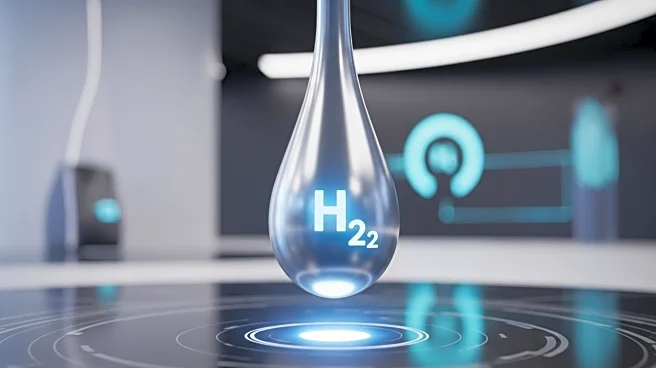What is the story about?
What's Happening?
BMW is shifting its design philosophy towards more subtle aesthetics, as revealed by Oliver Heilmer, the former Head of Design at Mini. The company plans to move away from bold, attention-grabbing designs to embrace calm, monolithic surfaces that maintain emotional appeal. This change is part of the revival of the Neue Klasse, which will influence the design of over 40 facelifted and next-generation models by 2027. The kidney grille, a signature BMW feature, will continue to vary in shape and size across models, with SUVs adopting a vertical interpretation. The interior design will also see significant changes, including the introduction of a large central display and a full-width projection system called Panoramic Vision.
Why It's Important?
BMW's new design direction marks a significant shift in the automotive industry, reflecting broader trends towards minimalism and technological integration. This approach could influence consumer preferences, potentially attracting buyers who favor understated elegance over bold designs. The emphasis on technology, such as the Panoramic Vision and reduced physical controls, aligns with the growing demand for tech-savvy vehicles. This shift may impact BMW's market position, as it balances the appeal of traditional combustion engines with the rise of electric vehicles. The changes could also affect competitors, prompting them to reconsider their design strategies.
What's Next?
BMW plans to launch more than 40 facelifted and next-gen cars by the end of 2027, all featuring elements of the Neue Klasse design. The company is also considering further expansion in 2029, including a rugged model. As BMW continues to innovate, it may face challenges in maintaining customer satisfaction, particularly regarding the reduction of physical controls in favor of touchscreens and voice commands. The automotive industry will likely monitor BMW's progress closely, assessing the impact of these design changes on consumer behavior and market dynamics.
Beyond the Headlines
The shift towards subtle design and technological integration raises questions about the future of automotive aesthetics and functionality. As BMW moves away from traditional design elements like chrome and round headlights, it reflects a broader cultural shift towards modernity and sustainability. The focus on electric vehicles and tech-driven interiors may also influence regulatory policies and environmental standards, as automakers strive to meet evolving consumer expectations and legal requirements.
AI Generated Content
Do you find this article useful?
